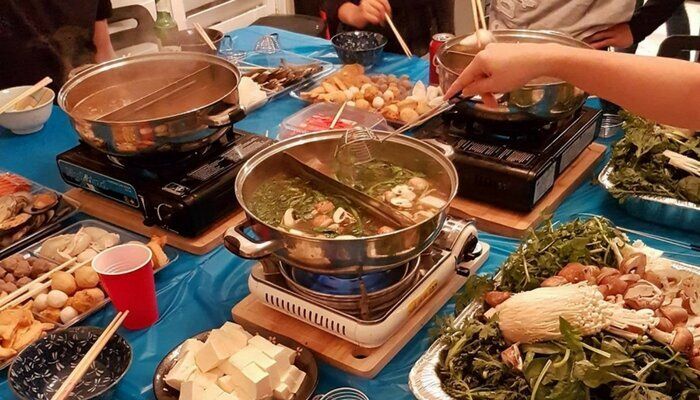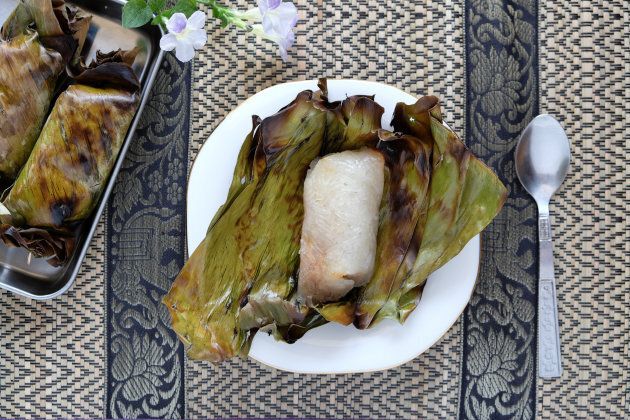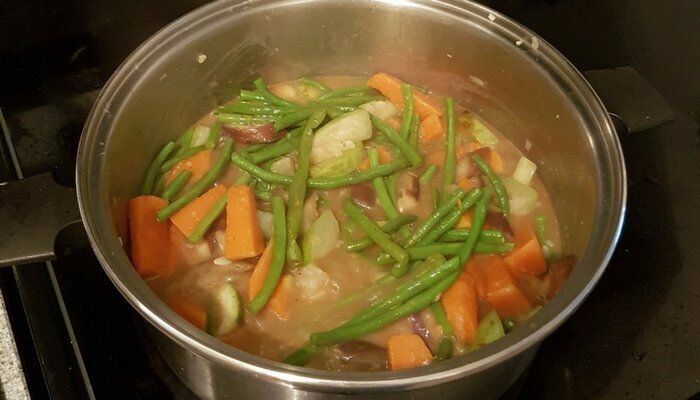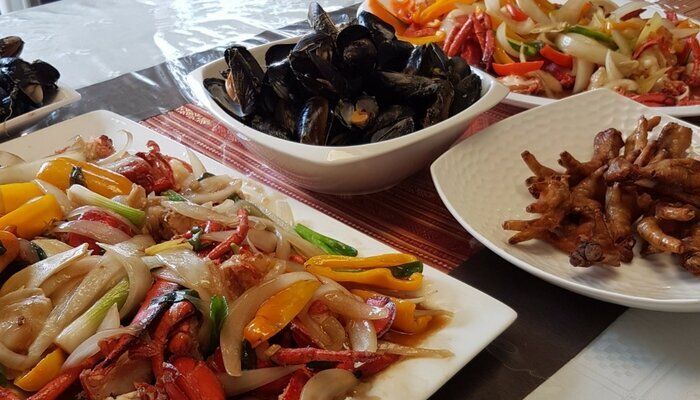
My mom is a great cook. Unfortunately, she hasn't always been great at sharing her recipes.
For years, whenever I got a craving for her home cooking, she'd insist I come home so she could prepare my favourite dishes like coconut curry and chicken adobo just for me.
My sister and I would joke and say she hid her recipes from us so we'd keep coming back, but she always maintained it was because she never knew the exact recipe, opting to cook by scent and memory instead of by precise measurements.
Maybe it's because I've always been more of a baker than cook or the fact that my mom's food always tasted better than my own, but for a few years I generally abstained from cooking my childhood comfort foods, relying on my mom to send them to me instead.
But all that changed when I began dating my partner. Like my mom, my boyfriend is a great cook.

Since we started dating he's cooked me all sorts of things -- mostly North American dishes, but every now and then he prepares or brings home the dishes he grew up eating in his Laotian household.
Lao cuisine, which is heavily influenced by neighbouring countries Thailand and Vietnam, has some parallels with the Filipino cuisine my mom brought me up on.
In Laos, most meals are served with sticky rice -- a sweet glutinous rice that becomes sticky when cooked. In the Philippines, steamed white rice is the go-to option. In both countries, rice is a staple as well as an edible utensil that is used to scoop up saucy dishes with your hands.

Rice isn't the only thing the two cuisines have in common. Thanks to their shared climate and close proximity to each other, Filipino and Lao cuisine use similar ingredients like fermented fish sauces, coconut milk and tropical fruits.
When the time came for me to cook for my partner, I wanted to cook dishes that used our shared ingredients in an effort to win him over on Filipino food. So, I called my mom.
Over the phone, she'd talk me through her recipes for some classic Filipino dishes like fish sinigang -- a sour soup made with fish sauce, tamarind seasoning, green squash, tomato and leafy greens, and pinakbet -- a one-pot mixed veggie dish with shrimp paste, okra, pumpkin and long beans.

While cooking, I'd send her photos of the food's progress over Facebook messenger and she'd call me back asking questions about the smell coming from the stove, she'd talk me through corrections to get the right flavour combinations.
Together, we'd get pretty excited when the final dish came out a success and even more excited when it got a thumbs up from my mate.
In a way, you could say the food is what brought us together. Not just me and my mom, nor me and my boyfriend, but rather our families in general.
Even though I'm learning to cook Filipino and Indian dishes from my mom, she still takes pride in preparing food for both me and my partner whenever we come to visit.
And his mom sends us home with goodies, too. She even packs up some glutinous rice wrapped in banana leaf specifically with my parents in mind, because it reminds them of a Filipino dish called suman.
I'll never forget the time when I went to my boyfriend's house and watched in awe as his mom and aunts whipped up a delicious spread of handmade fresh noodles, meat salad, mussels and prawns.

I asked his mom what I could do to help and she happily passed me a chopping board and some peppers for a stirfry. As I sliced them up my boyfriend teased me about my less-than-stellar knife skills. His mom listened to us bicker for a bit then stopped us, telling us how she only learned to cook after she had discovered her husband used to toss out the lunches she made for him.
She said it didn't upset her that her husband didn't like her cooking, what upset her is that he never told her what he liked so she would never get better.
My mom had a similar experience. She grew up cooking Filipino food both in The Philippines and when she moved abroad to Dubai, but when she married my Indian father she had a steep learning curve, so she looked to my father's aunties for recipes and guidance. With their help, she learned how to make traditional Goan dishes like sorpotel -- a Portuguese offal pork stew -- and minced meat -- a curried beef dish with mixed vegetables and boiled eggs.
Little by little I'm expanding my menu, and though it is fairly focused on North American and Filipino cooking, for now, I'm fortunate to be surrounded by so many great cooks. Now I know that when the time is right I can turn to my mom, his mom and both of our aunties for hands-on cooking tutorials that would put "The Joy of Cooking" to shame.
Born And Raised is an ongoing series by HuffPost Canada that shares the experiences of second-generation Canadians. Part reflection, part storytelling, this series on the children of immigrants explores what it means to be born and raised in Canada.
Follow HuffPost Canada Blogs on Facebook
Also on HuffPost:
